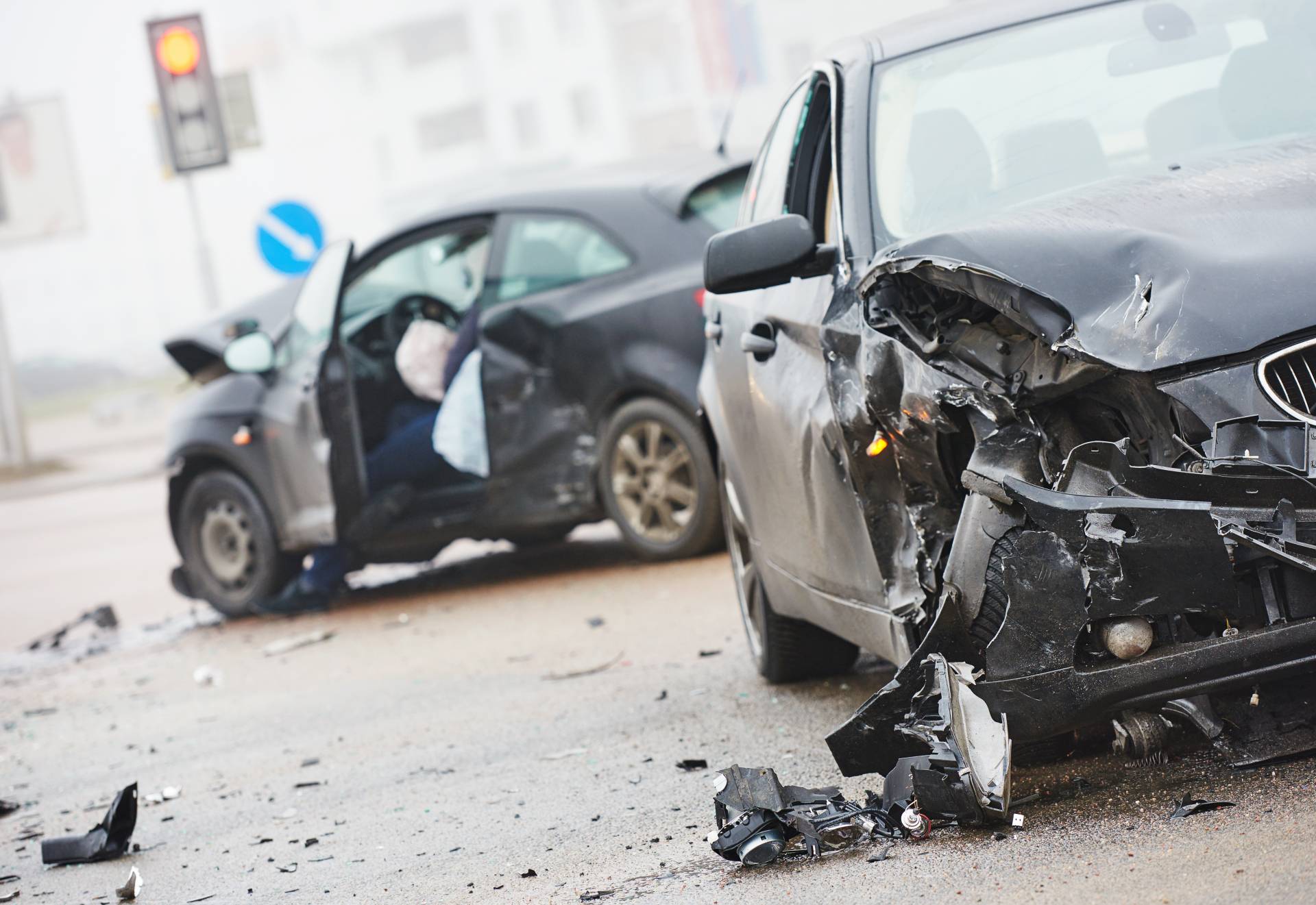
What Is Automobile Negligence?
Car Accidents“Negligence” is the legal principle behind most of the legal claims arising from traffic accidents.
If you’re in a car accident and you sued or get sued, you’ll need to know precisely how the law defines “negligence” and how to prove it in a court of law.
This is a general introduction to negligence and the law, but if you are involved in an actual traffic crash, you’ll need to obtain the legal advice that’s pertinent to your individual case by consulting with an experienced car accident attorney.
How is negligence legally defined? When someone is “legally” negligent, it means that he or she has acted thoughtlessly, carelessly, or distractedly in a way that has harmed or injured someone else.
A person can be actively negligent (by speeding or by driving recklessly, for example) or passively negligent (by failing to stop at a stop sign or by failing to use lights when driving at night, for example).
IF YOU SUE FOR INJURIES, WHAT DO YOU HAVE TO PROVE?
Motorists must avoid negligent driving. If a negligent motorist injures another driver, passengers, or pedestrians, that driver becomes legally liable for any injuries suffered by those persons.
In a personal injury case, an allegedly injured victim who files a personal injury lawsuit is called the “plaintiff.” The plaintiff must prove that the “defendant” (the person being sued) was negligent and that the negligence caused injury.
If you are injured by negligence, you’ll need the help of a good personal injury lawyer to prove that negligence was the reason you were injured. Specifically, the plaintiff’s side in a personal injury case must prove four claims:
-that the law required the defendant to drive with reasonable care
-that the defendant did not drive with reasonable care but instead drove negligently
-that the defendant’s negligence was the direct cause of the plaintiff’s injury or injuries
-that the plaintiff suffered losses as a result of the injury or injuries
The third point is vital and is often overlooked. If Juan is claiming that Eleanor crashed into his car and caused a traumatic brain injury, he must prove the brain injury was caused by the traffic crash.
If Juan was playing baseball the day before the accident and was hit in the head with a baseball that day, he may have a tough time proving that the traffic crash – and not the baseball – caused the traumatic brain injury.
The fourth point is equally important. Crash victims are entitled under Texas law to compensation for injuries, lost wages or earning capacity, pain and suffering, and property damages.
If there are no actual monetary losses, a plaintiff can’t recover any damages. For example, if you are “shook up” by an accident where the other driver was negligent, but you are not injured and your vehicle is not damaged, you cannot recover any compensation.
That’s why it’s vital for an accident victim to keep and make copies of medical receipts, test results, the police accident report, and any other documents generated by an accident and injury.
In Texas, an experienced car accident attorney can tell you if you have legal grounds for filing a personal injury lawsuit and can also assess your chances of winning such a lawsuit.
HOW CAN YOU AVOID NEGLIGENT DRIVING?
Under state law, motorists must use “reasonable care” to avoid injuring others. But precisely what does reasonable care actually mean?
Listed below are several specific examples of the exercise of reasonable care, and although reasonable care is not limited to these examples, if a motorist violates any of the examples listed here, the motorist has violated the duty of reasonable care:
-Vigilance and driving cautiously: Drivers have a duty to stay alert and on the lookout for other vehicles, pedestrians, objects, and road hazards. All drivers are expected to see what an average, careful, and prudent motorist would see. A failure to drive vigilantly may constitute negligence.
-Driving at a reasonable speed: Drivers have a duty to drive at a speed that is proper and reasonable in terms of the traffic, visibility, road conditions, and weather. Even driving at the speed limit could conceivably be considered negligent if visibility is low, the weather is bad, or the situation warrants particular caution (such as a large crowd of pedestrians, a road construction site, or a traffic standstill).
-Staying in control of the vehicle: Drivers are expected to keep their vehicles under control by being able to steer accurately and to stop quickly. If a car goes out of control for no explicable reason, the assumption will be that the driver was negligent.
-Maintaining the vehicle in good working order: Motorists are expected to maintain their vehicles in good working order and to use their safety equipment. The lights, brakes, and wipers not only need to work well – they need to be used when it is appropriate to use them.
-Driver negligence is responsible for the overwhelming majority of traffic accidents and injuries, but, every driver can reduce the risk by adhering to three simple rules: don’t drink and drive, eliminate distractions, and always drive cautiously.
The National Highway Traffic Safety Administration says that 10,265 people died in the U.S. in alcohol-related traffic collisions in 2015, accounting for about one in three traffic fatalities (about 29 percent) on U.S. streets and highways.
If you plan to share some drinks with friends, don’t plan to drive. In Texas, taxis, limos, and ride-sharing services are available 24 hours a day, 365 days a year.
Speeding is also a factor in about one of three fatal traffic collisions. If you injure someone while speeding, driving recklessly, or driving under the influence, you could face criminal penalties in addition to a personal injury lawsuit. Distracted driving is another genuine danger.
Turn off your cell phone when you drive, and never try to eat take-out food or read a map or newspaper as you drive. If you must tend to a child or a pet, pull off the road first.
WHAT DUTIES ARE IMPOSED ON MOTORISTS?
Every state tells drivers how they are expected to behave behind the wheel. In some situations, the violation of a traffic law leads to a “presumption” of negligence.
In these circumstances, a defendant in a personal injury case will need to prove that he or she was not negligent – rather than requiring the plaintiff to prove the defendant’s negligence.
Behaviors that lead to a presumption of negligence include but are not limited to:
-driving while intoxicated by alcohol or drugs
-driving on the left side of the road
-violating the right-of-way rules, especially a pedestrian’s right of way
Every driver can be a better driver, but the only driver you can do anything about is you. If you are injured by a negligent driver despite your own best efforts to drive safely, consider discussing your legal rights and options – which may include a personal injury lawsuit – with an experienced Edinburgh personal injury attorney. You may receive compensation for your medical care, lost wages, and all other accident and injury-related losses and damages.








